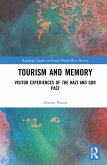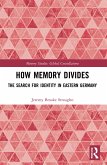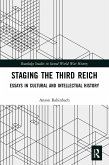This book considers tourism to memorial sites from a visitor's point of view, challenging established theories in tourism and memory studies by critically appraising Germany's often celebrated memory culture.
Based on visitor observations and exit interviews, this book examines how domestic and international visitors negotiate their visits to the concentration camp memorials Ravensbrück and Flossenbürg, the House of the Wannsee Conference and the former Stasi prison Bautzen II. It argues that memorial sites are melting pots where family, national and global narratives meet. For German visitors, the visit to memorial sites is a confrontation with Germany's responsibility for the two dictatorships while for international visitors it can be a form of 'seeing is believing'. Ultimately, it is the immediacy of the space that is the most important part of the visit.
Rooted in an interdisciplinary approach, this book will be of interest to academics andstudents in German Studies, Tourism and Heritage Studies, Museum Studies, Public History, and Memory Studies.
Based on visitor observations and exit interviews, this book examines how domestic and international visitors negotiate their visits to the concentration camp memorials Ravensbrück and Flossenbürg, the House of the Wannsee Conference and the former Stasi prison Bautzen II. It argues that memorial sites are melting pots where family, national and global narratives meet. For German visitors, the visit to memorial sites is a confrontation with Germany's responsibility for the two dictatorships while for international visitors it can be a form of 'seeing is believing'. Ultimately, it is the immediacy of the space that is the most important part of the visit.
Rooted in an interdisciplinary approach, this book will be of interest to academics andstudents in German Studies, Tourism and Heritage Studies, Museum Studies, Public History, and Memory Studies.









